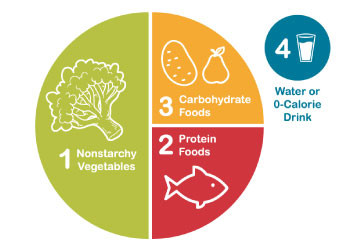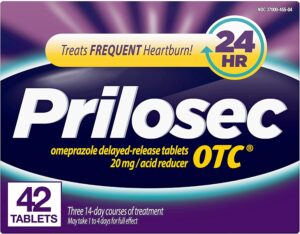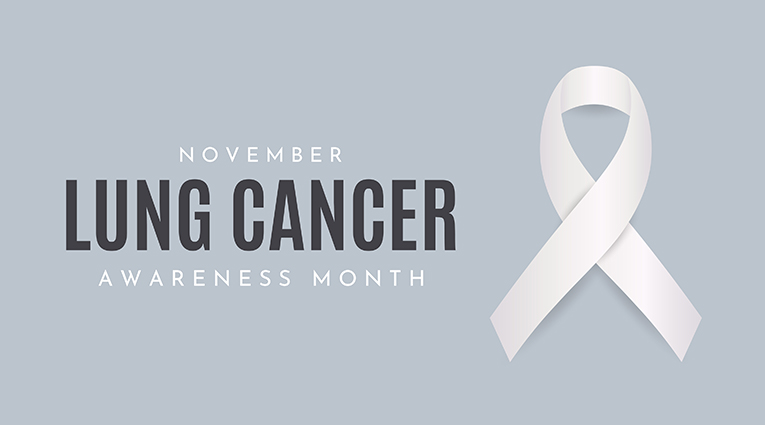Archive for November, 2022
Manage Diabetes Through Lifestyle Modifications. By Our Student Pharmacist, Isatu Kamara.
As November comes to a close, so does National Diabetes Month. Diabetes, however, is a condition that must be managed year-round. If you or a loved one has diabetes, it is important to understand how the condition is best managed to prevent further progression of the disease.
Type 2 diabetes may be managed with oral medications, but may also require insulin injections. In this post, instead of focusing on the medications used to treat diabetes, I will be discussing what you can do to manage type 2 diabetes through lifestyle modifications like diet and exercise.
Diet
One of the easiest ways to create healthy meals is to follow the American Diabetes Association Diabetes Plate Method. By using this method, you can create a balanced meal of vegetables, carbohydrates, and protein without having to do any weighing or calculations. Here’s how to put together your plate:
- Find a reasonably sized plate, not too big or too small. A plate that is about 9 inches across is recommended.
- Fill half of your plate with non-starchy vegetables. Non-starchy vegetables are high in vitamins, minerals, and fiber and lower in carbohydrates, so they won’t raise blood sugar much.
Examples:
- Asparagus
- Broccoli/Cauliflower
- Celery
- Mushrooms
- Leafy greens like kale or collards
- Salad greens like lettuce, spinach, or arugula
- Fill one quarter of the other half of your plate with lean protein foods. Lean proteins are lower in fat and saturated fat than other sources of protein.
Examples:
- Chicken, turkey, or eggs
- Fish like salmon, tuna, or tilapia
- Shellfish like shrimp, lobster, or scallops
- Lean beef or pork cuts
- Cheese
Plant-based examples:
- Beans, lentils, or hummus
- Nuts and nut butters
- Edamame
- Tofu
- Fill the last quarter of your plate with carbohydrates. Foods high in carbohydrates have the greatest effect on raising blood sugar so limiting these foods to a quarter of a plate can help prevent blood sugar spikes after meals.
Examples:
- Whole grains like brown rice, bulgur, oats/oatmeal, or quinoa
- Starchy vegetables like green peas, plantain, potato or sweet potato
- Beans and legumes
- Fruits
- Dairy products like milk/milk substitutes and yogurt
- For your beverage choose water or a low-calorie drink. Water is the best option because it has no calories or carbohydrates, so it won’t affect your blood sugar.
Other options include:
- Unsweetened tea or coffee
- Sparkling or flavored water with no sugar
- Diet soda
Exercise
Try adding physical activity to your daily routine. Physical activity lowers your blood sugar levels and can help you lose weight. If you aren’t used to physical exercise here is a resource to help you get started safely. Generally, the goal is to incorporate 20-25 minutes of moderate-intensity physical activity every day to total at least 150 minutes a week.
Some examples of moderate-intensity physical activity are:
- Walking briskly
- Dancing
- Swimming
- Bicycling
You should always talk to your doctor or diabetes educator before starting a new exercise program and let them know if you have any questions or concerns with your routine.
If not properly treated, diabetes can lead to serious problems like, heart attack, stroke, kidney disease, vision problems, nerve pain and amputation. It is important to make healthy lifestyle choices to manage your diabetes and follow up regularly with your health care providers.
Resources:
- Get active! Centers for Disease Control and Prevention. https://www.cdc.gov/diabetes/managing/active.html. Published May 6, 2021. Accessed November 8, 2022.
- Managing diabetes with diet and exercise. Commonwealth Care Alliance. https://www.commonwealthcarealliance.org/living-well-at-home/how-to-manage-diabetes-with-diet-and-exercise/. Published October 18, 2021. Accessed November 8, 2022.
- Patient education: Patient education: Type 2 diabetes (The Basics). UpToDate. https://www.uptodate.com/contents/type-2-diabetes-the-basics. Published January 21, 2021. Accessed November 8, 2022.
- What is the diabetes plate method? Diabetes Food Hub. https://www.diabetesfoodhub.org/articles/what-is-the-diabetes-plate-method.html. Published February 1, 2020. Accessed November 8, 2022.
National GERD Awareness Week. By Our Student Pharmacist, Isatu Kamara.
You may not know it but November 20-26 is National GERD Awareness Week.
This national awareness week began in 1999 and during this time the International Foundation for Gastrointestinal Disorders (IFFGD) places an emphasis on encouraging people with symptoms of GERD to seek treatment.
GERD stands for Gastroesophageal Reflux Disease, and it affects about 20% of the population. If you have never heard of GERD, you may be suffering from it without knowing. Without treatment it is possible for GERD to lead to serious health conditions over time, so it is important to educate yourself on the condition so you can recognize symptoms in yourself and loved ones.
What is the difference between acid reflux and GERD?
Acid reflux, heartburn, and GERD are often used interchangeably, but it is important to understand the differences between them.
Acid reflux is when stomach acid backflows into the esophagus.
Heartburn is the feeling associated with acid reflux and it presents as a mild burning sensation in the mid-chest. Heartburn often occurs after meals or when lying down.
Nearly everyone will experience acid reflux at some point in life. When acid reflux causes bothersome symptoms or causes damage to the body, it is classified as GERD, or chronic acid reflux. If you experience acid reflux more than twice a week for several weeks and are experiencing symptoms despite taking medication, you may have developed GERD.
What are the symptoms of GERD?
- Heartburn- burning sensation in the chest
- Regurgitation- acid and undigested food backflow into the throat or mouth
- Feeling of food stuck in the throat
- Chest pain
- Trouble swallowing
- Raspy voice
- Sore throat
- Unexplained cough
- Nausea or vomiting
How do I know I’m experiencing heartburn and not having a heart attack?
Heartburn is an uncomfortable burning feeling or pain in the chest that can move up to the neck and throat area. A heart attack can cause pain in the arms, neck, and jaw.
Symptoms of a heart attack also include:
- shortness of breath
- sweating, nausea
- dizziness
- extreme fatigue
- anxiety
If you are experiencing chest pain that is accompanied by any of these symptoms, call for medical attention immediately.
The most common over-the-counter (OTC) medications used to relieve symptoms of GERD are:
Antacids: provide quick relief of symptoms by neutralizing stomach acid. Examples: Maalox, Tums, Mylanta
H-2 receptor blockers: prevent symptoms by decreasing acid production. Examples: Pepcid, Tagamet (Zantac was removed from the market in 2020 due to cancer risk. If you still have this medication at home please stop taking it and throw any left-over medication away.)
Proton pump inhibitors: stronger class of medication that prevents symptoms by reducing stomach acid production. Examples: Prilosec, Nexium, Prevacid
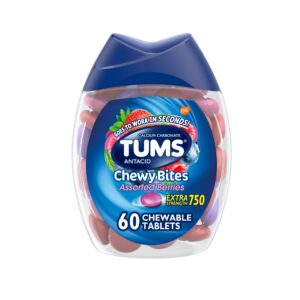
If you are having any of the symptoms of GERD and they are interfering with your daily life, reach out to your provider to discuss treatment options. If your symptoms are not controlled with OTC medications your doctor may prescribe you a medication or recommend surgery.
References:
- GERD Awareness Week – November 23-29. National Today. https://nationaltoday.com/gerd-awareness-week/. Published March 26, 2021. Accessed November 7, 2022.
- Heartburn, Acid Reflux, or GERD: What’s the Difference? Pfizer. https://www.pfizer.com/news/articles/heartburn_acid_reflux_or_gerd_what_s_the_difference. Accessed November 7, 2022.
- Patient education: Acid reflux and gastroesophageal reflux disease in adults (The Basics). UpToDate. https://www.uptodate.com/contents/acid-reflux-and-gastroesophageal-reflux-disease-in-adults-the-basics. Published January 21, 2021. Accessed November 7, 2022.
Honor Lung Cancer Awareness Month by Quitting Smoking. By Our Student Pharmacist, Isatu Kamara.
November is Lung Cancer Awareness Month and lung cancer is the leading cause of cancer death in the United States. The next most common causes of cancer death are colorectal, breast and pancreatic cancer; lung cancer is still responsible for more deaths than the three combined. The best thing one can do to prevent lung cancer is to stop smoking or to continue to abstain from smoking if you are not a smoker.
For individuals who have smoked, you may benefit from a lung cancer screening. A CT scan is recommended for those who are 50 to 80 years old and have a 20 pack-year history and currently smoke or have quit within the past 15 years. Pack-year refers to the average amount of packs of cigarettes smoked per day for one year.
Lung cancer screening also has its own risks, so it is only recommended for those that are high risk of developing lung cancer due to age and smoking history. Talk to your health care provider to find out if screening is recommended for you.
Aside from the reduced lung cancer risk, quitting smoking has a wide range of health benefits. It lowers the risk of heart disease, lung disease, kidney failure, infection, stomach issues, and osteoporosis.
Quitting smoking may be easier said than done for some people, but there are support and resources available. It is possible to stop smoking without any help, but with help the chances of being successful with quitting improve greatly.
Here are some steps to get started with quitting:
- Discuss the decision to stop smoking with your primary care physician or local pharmacist.
- Pick the date you want to quit.
- Tell your family and friends that you plan on quitting.
- Make a plan and account for challenges you may face, like cravings.
- Remove cigarettes from your home and car.
- When your quit date arrives, follow your plan and follow up with your health care providers.
There are over-the-counter medications to help you stop smoking, like nicotine replacement therapy (NRT). As you may know, nicotine is the main addictive substance in tobacco. When you try to quit smoking, you may experience symptoms of withdrawal due to your body not getting nicotine anymore. Nicotine replacement therapy helps with the physical withdrawal symptoms of quitting.
NRT comes in different forms including skin patches, gum, and lozenges.
While NRT helps with the physical symptoms, you may need to attend counseling or support groups to help with the emotional aspects of quitting. There are also prescription-only medication options that may work for you.
When you are ready to quit, talk to your primary care physician or pharmacist about the options that are available for you. Also, make sure that they have an accurate list of your medications and are aware of all of your medical conditions.
Make the decision to quit smoking today!
For help quitting, visit smokefree.gov, call 1 (800) QUIT-NOW (784-8669), or text “QUIT” to 47848.
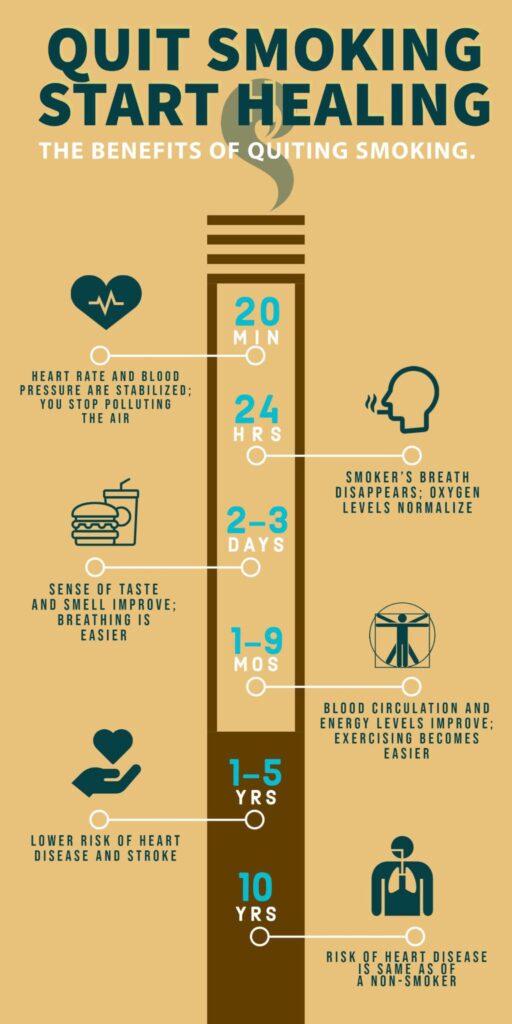
References:
- Lung Cancer Awareness Feature. Centers for Disease Control and Prevention. https://www.cdc.gov/cancer/dcpc/resources/features/lungcancer/index.htm. Published October 20, 2022. Accessed November 7, 2022.
- Lung Cancer Awareness month. American Association for Cancer Research (AACR). https://www.aacr.org/patients-caregivers/awareness-months/lung-cancer-awareness-month/. Published November 1, 2022. Accessed November 7, 2022.
- Nicotine replacement therapy to help you quit tobacco. American Cancer Society. https://www.cancer.org/healthy/stay-away-from-tobacco/guide-quitting-smoking/nicotine-replacement-therapy.html. Published August 2, 2021. Accessed November 7, 2022.
- Patient education: Quitting smoking (Beyond the Basics). UpToDate. https://www.uptodate.com/contents/quitting-smoking-beyond-the-basics. Published January 21, 2021. Accessed November 7, 2022.


